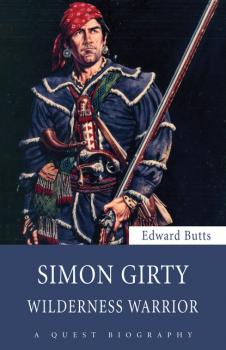Edward Butts
Список книг автора Edward ButtsSheridan Nurseries
A charming tale of history, creativity, natural inspiration, and a love of gardening. In 1913, Howard Dunington-Grubb and his wife, Lorrie, bought a small plot of land near Sheridan, Ontario, for the cultivation of ornamental plants. Local farmers thought they were crazy. But Howard and Lorrie, landscape architects recently arrived from England, were visionaries who dreamed of creating magnificent gardens in the colonial wasteland. Realizing that Canada had no nurseries that produced the plants they needed, they started one of their own. To manage it they hired Herman Stensson, an expert nurseryman whose references included one from the crown prince of Denmark. The chronicles of the Dunington-Grubbs and the Stensson family form the basis for the incredible history of Sheridan Nurseries, enhanced by the diverse backgrounds and experiences of the many people who helped turn a dream into success. This Canadian saga reaches from the monuments of Toronto’s University Avenue and Niagara’s Oakes Garden Theatre to hundreds of parks and estates, and perhaps even your own backyard.
The Desperate Ones
Short-listed for the 2007 Arthur Ellis Award for Best Non-Fiction They were among Canada’s most desperate criminals, yet their names have been all but forgotten in the annals of history – until now! In their day these lawless men made headline news. Author Ed Butts has rescued their stories from dusty newspaper pages and polished them up for today’s readers in this fascinating volume. The Markham Gang introduced Canada West to organized crime long before anyone had heard of the Mafia. Lew Bevis took on the whole Halifax Police Department in a blazing gun battle. The wild Macdonald cousins went to Michigan, where they ended their violent careers as victims of a savage lynching. Reid and Davis, the notorious Border Bandits of the Roaring Twenties, were the nightmare of every banker from Manitoba to the state of Washington. This rogues’ gallery of killers, robbers, and men of mystery shocked the nation, challenged the forces of law and order, and sometimes even got away with it.
Running With Dillinger
This book picks up where The Desperate Ones: Canada’s Forgotten Outlaws left off. Here are more remarkable true stories about Canadian crimes and criminals – most of them tales that have been buried for years. The stories begin in colonial Newfoundland, with robbery and murder committed by the notorious Power Gang. As readers travel across the country and through time, they will meet the last two men to be hanged in Prince Edward Island, smugglers who made lake Champlain a battleground, a counterfeiter whose bills were so good they fooled even bank managers, and teenage girls who committed murder in their escape from jail. They will meet the bandits who plundered banks and trains in Eastern Canada and the West, and even the United States. Among them were Same Behan, a robber whose harrowing testimony about the brutal conditions in the Kingston Penitentiary may have brought about his untimely death in «The Hole»; and John «Red» Hamilton, the Canadian-born member of the legendary Dillinger gang.
Line of Fire
Across Canada peace officers put their lives on the line every day. From John Fisk in 1804, the first known Canadian policeman killed in the line of duty, to the four RCMP officers shot to death in Mayerthorpe, Alberta, in 2005, renowned true crime writer Edward Butts takes a hard-hitting, compassionate, probing look at some of the stories involving the hundreds of Canadian law-enforcement officers who have found themselves in harm’s way. Some, like the four RCMP officers who perished in the Northwest Territories on the «Lost Patrol» of 1910, died in horrible accidents while performing their duties. Others, such as the Mounties involved in the manhunts for Almighty Voice and the Mad Trapper of Rat River, found themselves in extremely dangerous, violent situations. One thing is certain about all of these peace officers: they displayed amazing courage and never hesitated to make the ultimate sacrifice for their fellow citizens.
Simon Girty
During the American Revolution and the border conflicts that followed, Simon Girty’s name struck terror into the hearts of U.S. settlers in the Ohio Valley and the territory of Kentucky. Girty (1741-1818) had lived with the Natives most of his life. Scorned by his fellow white frontiersmen as an «Indian lover,» Girty became an Indian agent for the British. He accompanied Native raids against Americans, spied deep into enemy territory, and was influential in convincing the tribes to fight for the British. The Americans declared Girty an outlaw. In U.S. history books he is a villain even worse than Benedict Arnold. Yet in Canada, Girty is regarded as a Loyalist hero, and a historic plaque marks the site of his homestead on the Ontario side of the Detroit River. In Native history, Girty stands out as one of the few white men who championed their cause against American expansion. But was he truly the «White Savage» of legend, or a hero whose story was twisted by his foes?
Henry Hudson
In 1607 Henry Hudson was an obscure English sea captain. By 1610 he was an internationally renowned explorer. He made two voyages in search of a Northeast Passage to the Orient and had discovered the Spitzbergen Islands and their valuable whaling grounds. In the process, Hudson had sailed farther north than any other European before him. In 1609, working for the Dutch, he had explored the Hudson River and had made a Dutch colony in America possible. Sailing from England in 1610, on what would be his most famous voyage, Hudson began his search for the Northwest Passage through the Canadian Arctic. This was also his last exploration. Only a few of the men under his command lived to see England again. Hudson's expedition was one of great discovery and even greater disaster. Extreme Arctic conditions and Hudson's own questionable leadership resulted in the most infamous mutiny in Canadian history, and a mystery that remains unsolved.





